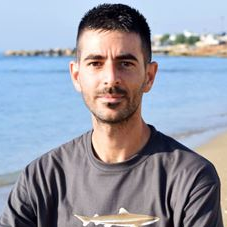Coastal Fish Research
A special issue of Journal of Marine Science and Engineering (ISSN 2077-1312). This special issue belongs to the section "Marine Biology".
Deadline for manuscript submissions: closed (28 February 2021) | Viewed by 44088
Special Issue Editor
Interests: marine biology; conservation biology; fish ecology and taxonomy; fishery research; biological invasions
Special Issues, Collections and Topics in MDPI journals
Special Issue Information
Dear Colleagues,
Coastal fish are important components of marine ecosystems. Furthermore, fishes are the most important economic resources for the majority of professional and recreational fisheries. The purpose of this Special Issue is to publish quality and impactful research articles with respect to several aspects of fish biology and ecology, including also commercial species, the impact of fishery on coastal fish communities, and biological invasion of non-indigenous fish species. Original and high-quality research directly related to various aspects mentioned above is encouraged.
Dr. Francesco Tiralongo
Guest Editor
Manuscript Submission Information
Manuscripts should be submitted online at www.mdpi.com by registering and logging in to this website. Once you are registered, click here to go to the submission form. Manuscripts can be submitted until the deadline. All submissions that pass pre-check are peer-reviewed. Accepted papers will be published continuously in the journal (as soon as accepted) and will be listed together on the special issue website. Research articles, review articles as well as short communications are invited. For planned papers, a title and short abstract (about 100 words) can be sent to the Editorial Office for announcement on this website.
Submitted manuscripts should not have been published previously, nor be under consideration for publication elsewhere (except conference proceedings papers). All manuscripts are thoroughly refereed through a single-blind peer-review process. A guide for authors and other relevant information for submission of manuscripts is available on the Instructions for Authors page. Journal of Marine Science and Engineering is an international peer-reviewed open access monthly journal published by MDPI.
Please visit the Instructions for Authors page before submitting a manuscript. The Article Processing Charge (APC) for publication in this open access journal is 2600 CHF (Swiss Francs). Submitted papers should be well formatted and use good English. Authors may use MDPI's English editing service prior to publication or during author revisions.
Keywords
- Coastal fish species
- Coastal fisheries
- Commercial fish species
- Non-indigenous fish
- Fish biology and ecology





